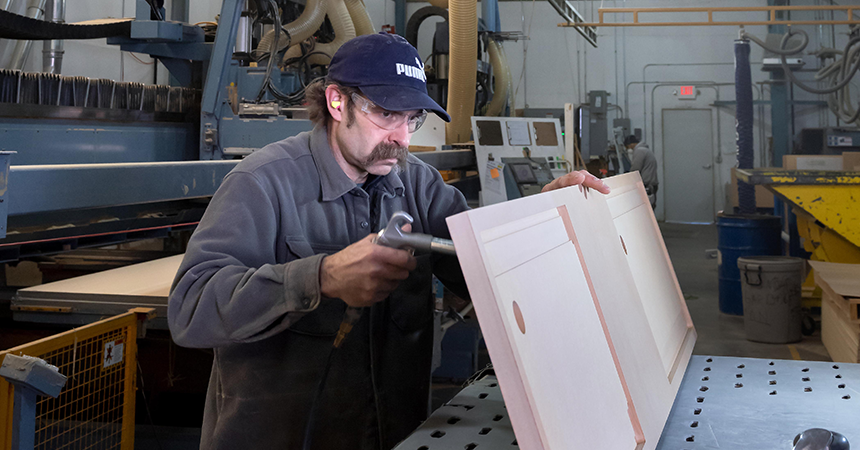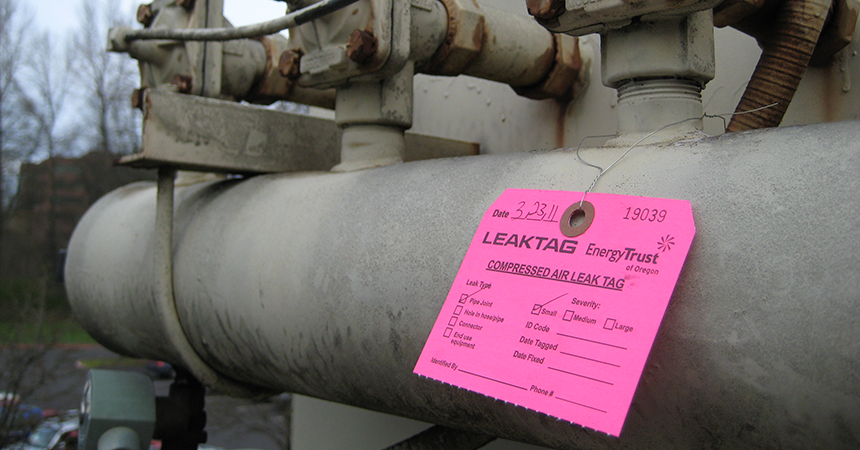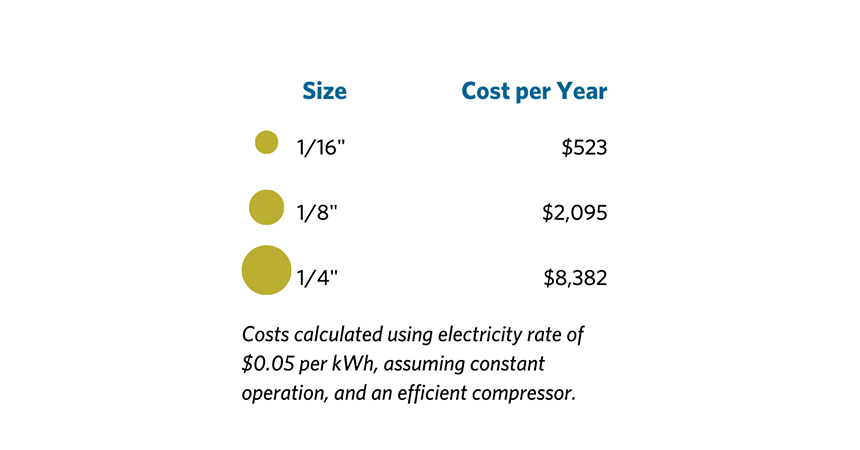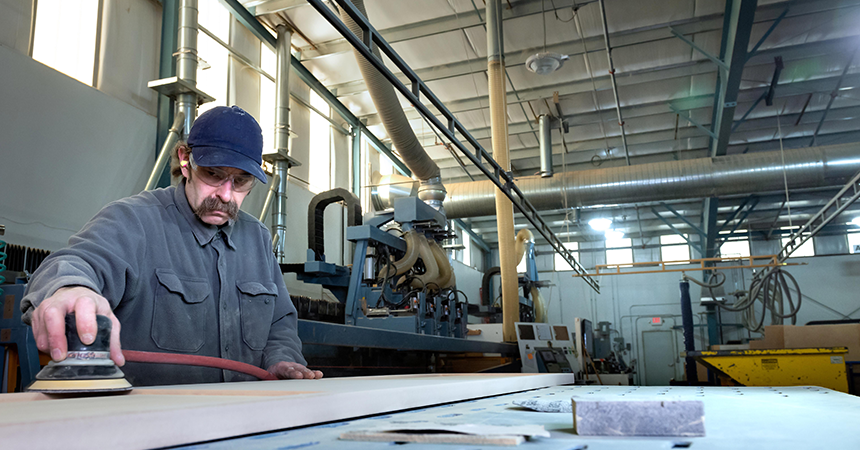Compressed air systems are industry workhorses that provide pressurized air to power vital plant equipment, controls and tools. They can be prone to leaks that cost you money and reduce equipment efficiency. In a competitive business environment, fixing compressed air leaks is one fast and easy way to keep operating costs in check. It’s also easier than ever with new cash incentives from Energy Trust of Oregon.
Finding and fixing compressed air leaks is a low-cost activity with strong potential for energy and cost savings. “We really want to help customers take advantage of leak repair savings,” said Kelson Redding, Energy Trust Production Efficiency outreach manager, “so we are helping identify leaks and making it easy to receive cash incentives for fixing them.”
Air leak repair incentive rates are calculated by the savings you achieve. Eligible projects receive $0.05 per kilowatt hour (kWh) saved, up to $125,000. “We are no longer requiring parts and labor cost documentation, plus with the new incentive structure, you are likely to recoup your costs by the time the project is complete. That’s how soon the savings could benefit your bottom line,” said Redding.
A high-value action
If you’re anywhere near your air compressor, you probably feel the heat it puts out. “For every kWh of electricity your compressor consumes, and you pay for, you only get about 0.15 kWh worth of usable compressed air. Most of the energy input is actually lost as heat rejected from the compressor cooler. Because these systems are inefficient to begin with, leaks are a very significant energy expense,” said Redding.
This graphic shows how much the cost of a single leak can add up over a year, depending on the size of its opening. Many leak searches detect dozens or more.
Source: Compressed Air Best Practices
Additionally, if you have many undetected leaks, your system won’t maintain enough pressure to optimally operate equipment and controls, and you may decide to invest in a new compressor.
Fixing leaks is typically one of the most cost-effective electricity savings investments, especially with cash incentives to help. Plus, air leak repair helps extend the life of equipment by cutting back on how often it cycles. Less running time also reduces maintenance requirements and unscheduled downtime.
More savings in a few easy steps
Industrial customers can participate in the compressed air leak repair offer once every 12 months. Eligible equipment includes one or two rotary screw compressors with greater than 25 horsepower for the system (no cap), and variable frequency drive or load/unload control. If your system does not meet these requirements, you may still qualify for leak repair as a custom energy-efficiency project.
If you’ve never participated, or it’s been more than a year, contact Energy Trust to schedule a leak sweep with a program representative. They’ll scan your system, tag the leaks and provide you with a leak report that includes savings and incentive estimates. You decide how and when to repair the leaks. Once you’re done, Energy Trust will verify the repairs and send you an incentive check.
Are you ready to stop the leaks and start the savings? Call us at 1.866.202.0576
or email production@energytrust.org.




